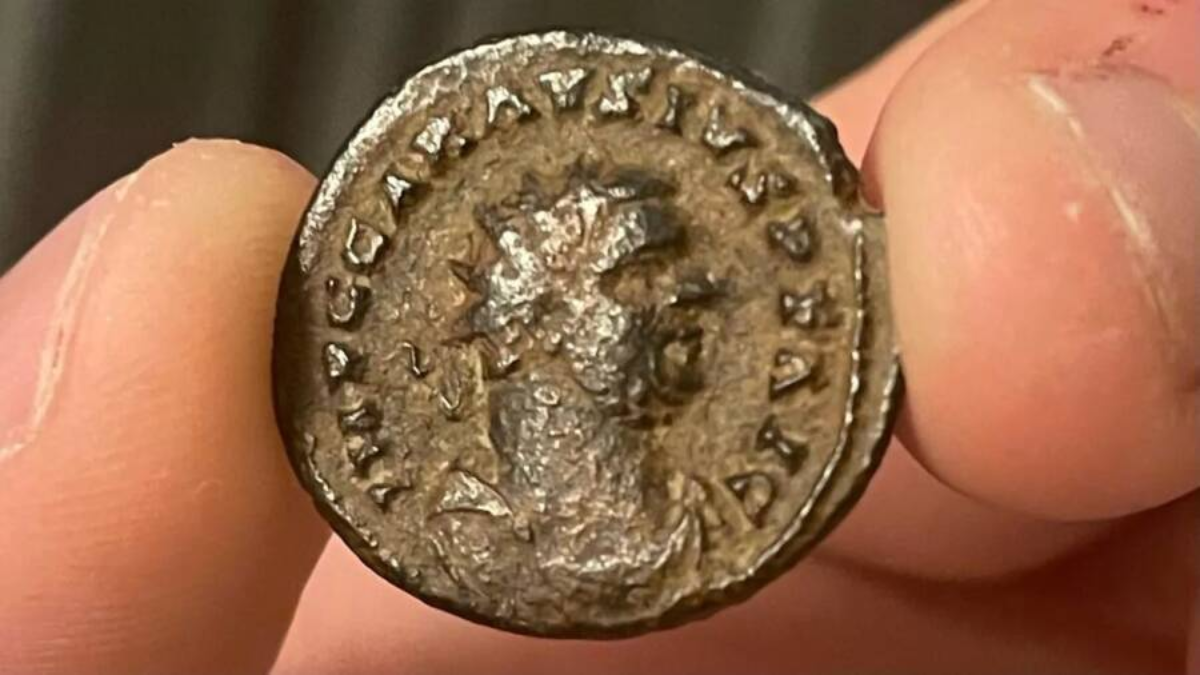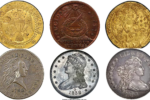A metal detectorist in England has made a remarkable discovery—an 1,800-year-old cache of Roman coins buried beneath a farmer’s field. The hoard, consisting of dozens of silver and bronze coins, provides a fascinating glimpse into the economy and daily life of ancient Britain during the Roman occupation.
A Stunning Discovery in Rural England
The discovery was made by an amateur metal detectorist, who was scanning farmland in Lincolnshire, a region known for its rich history of Roman settlements. Upon detecting a strong signal, he began digging and unearthed a collection of ancient coins buried just beneath the surface. Realizing the potential significance of the find, he immediately reported it to local archaeologists, who conducted a thorough excavation of the site.
Experts believe the coins date back to the 2nd century AD, during the rule of emperors such as Hadrian and Antoninus Pius. Many of the coins feature intricate depictions of Roman leaders, gods, and symbols that were common in currency from that period. The presence of such a large hoard suggests it may have been buried for safekeeping, either by a merchant, a soldier, or a wealthy landowner, possibly during a time of conflict or economic instability.
What the Coins Reveal About Roman Britain
Roman rule in Britain lasted from AD 43 to AD 410, and during this period, coins played a crucial role in trade and daily life. The newly discovered hoard provides fresh insights into the economy and craftsmanship of the time.
According to numismatists studying the find, the coins appear to be a mix of denarii (silver coins) and sestertii (bronze coins), both of which were commonly used throughout the Roman Empire. Some of the coins are in exceptional condition, with detailed engravings still visible despite being buried for nearly two millennia. Others show signs of wear, indicating that they were in circulation for many years before being buried.
This discovery adds to the growing body of evidence that suggests Lincolnshire was an important area during the Roman occupation of Britain. Historians believe the region was home to key Roman settlements and trade routes, which made it a hub for commerce and military activity.
The Future of the Coin Hoard
Under the UK’s Treasure Act, significant finds like this must be reported to local authorities for assessment. The British Museum and other institutions will evaluate the hoard to determine its historical importance and potential monetary value. If deemed treasure, the collection may be acquired for public display, with the finder and landowner receiving a fair market value reward.
For now, the coins are being carefully cleaned and studied by archaeologists and numismatists. Their analysis could reveal more details about Roman Britain’s economy, trade networks, and even the political landscape of the era.
Conclusion
The discovery of this 1,800-year-old Roman coin hoard is a significant find that sheds light on Britain’s ancient past. Whether hidden during a crisis or simply forgotten over time, these coins offer a tangible connection to the Roman world that once thrived in England. As experts continue to study the hoard, new insights into the history of Roman Britain may soon emerge.
For more details on Roman coin discoveries, visit The British Museum’s website.
Disclaimer – Our team has carefully fact-checked this article to make sure it’s accurate and free from any misinformation. We’re dedicated to keeping our content honest and reliable for our readers.








